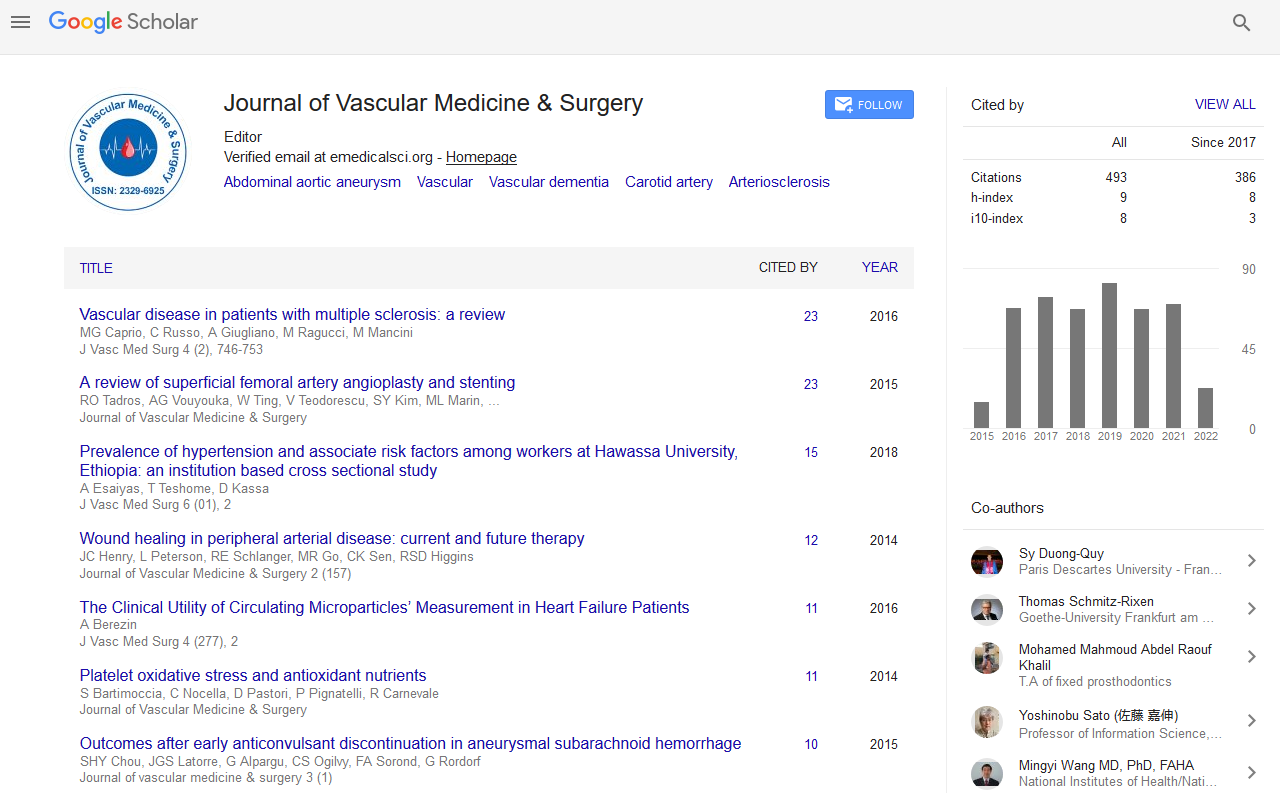Indexed In
- Open J Gate
- Academic Keys
- RefSeek
- Hamdard University
- EBSCO A-Z
- OCLC- WorldCat
- Publons
- Euro Pub
- Google Scholar
Useful Links
Share This Page
Journal Flyer

Open Access Journals
- Agri and Aquaculture
- Biochemistry
- Bioinformatics & Systems Biology
- Business & Management
- Chemistry
- Clinical Sciences
- Engineering
- Food & Nutrition
- General Science
- Genetics & Molecular Biology
- Immunology & Microbiology
- Medical Sciences
- Neuroscience & Psychology
- Nursing & Health Care
- Pharmaceutical Sciences
Abstract
Thrombo-Embolism Risk and Prophylaxis amongst Hospitalized Patients in Two Hospitals in Cameroon: A Cross-sectional Study in Sub-Saharan Africa
Ba Hamadou, Kamdem F, Bessong H, Ndongo Amougou S, Kuate Mfeukeu L, Nganou CN, Boombhi J, Menanga A and Kingue S
Background: Venous thrombo-embolism (VTE) is frequent worldwide. It has not been sufficiency studied in sub-Saharan Africa, with few data on the prevalence and treatment from urban settings. Objectives: We sought to study the thromboembolic risk and rate of thrombo-prophylaxis for VTE in hospitalized patients.
Methods: Between November 2016 and April 2017, we carried out a cross-sectional descriptive study in two hospitals in the Far North region- Cameroon. Participants were consenting adult patients hospitalized in the medical and surgical wards. We excluded those with diagnosed VTE. We evaluated the risk for VTE with Caprini Risk Assessment model and we assessed prophylaxis measures used.
Results: A total of 520 patients were included - 282 (54.2%) from the surgical units and 238 (45.8%) from the medical units. The mean age was 49 ± 17 years, and 296 (57%) were males. The mean duration of hospitalization was 10 ± 9 days. Risk for VTE was seen in 284 (54.6%) patients -182 (64.5%) in the surgical units, and 102 (42.8%) in the medical units (p<0.001). Of those at risk, 165 (58.1%) were males. Adequate VTE thrombo-prophylaxis was carried out in 120 (42.3%) patients - 86 (47.3%) in the surgical units, and 33 (32.4%) in the medical units.
Conclusion: The risk for VTE was seen in more than half of hospitalized patients in these semi-urban and rural hospitals. Less than half of those at risk received adequate thrombo-prophylaxis. The surgical units had significantly higher VTE risk and adequate prophylaxis rate than the medical units.


